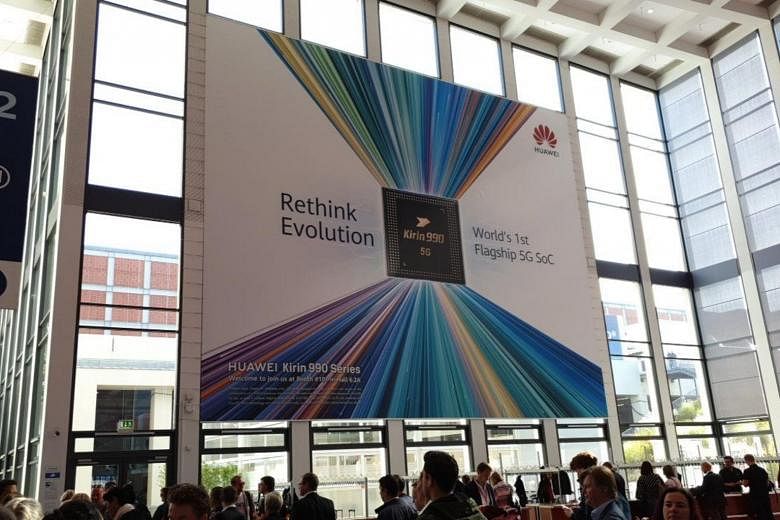BERLIN - Chinese smartphone maker Huawei launched its first 5G integrated mobile chipset on Friday (Sept 6) at the IFA consumer tech trade show, even as other brands are jostling to put out similar chips.
Such an integrated chipset is said to perform better than the processors in existing 5G phones and can potentially allow handsets to be smaller.
Huawei's Kirin 990 (5G) integrated chip was unveiled during a keynote address at Europe's largest tech show by the company's consumer head Richard Yu. A 4G variant of the chip, Kirin 990, was also announced for 4G mobile devices.
"To meet users' requirements for enhanced 5G experiences in the 5G era, Kirin 990 (5G) has been fully upgraded in terms of performance and power efficiency, AI computing, and image signal processing, extending mobile phone experiences to a new level," said Mr Yu.
Huawei's Mate 30 series of smartphones, which will be launched in mid-September, are likely to be the first devices with the Kirin 990 chipset. But the Mate 30 phones are unlikely to find traction outside China after Google confirmed last month that these phones will not have the Google Play Store and other Google apps because of US sanctions. Huawei was blacklisted by the United States in May, cutting off the firm's access to US-made goods and services.
While the US and China this week agreed to resume trade talks next month, President Donald Trump has said that the US is "not doing business with Huawei" because of national security concerns.
Existing 5G smartphones, such as the Samsung Galaxy S10 5G, use a 4G mobile chipset from Qualcomm with a separate 5G modem.
But integrating the 5G modem into the chipset will improve performance and lower manufacturing cost, said Mr Peter Richardson, research director at market research firm Counterpoint Research.
"Compared to having a separate 5G modem, an integrated solution has a much smaller footprint, which means the phone can be smaller, lighter and have better battery performance," he explained.
Huawei claims that the Kirin 990 (5G) reduces power consumption by 30 per cent compared to chipsets with a separate 5G modem. It also supports both standalone (end-to-end 5G) and non-standalone (5G built with 4G infrastructure) networks.
Other chipmakers are also racing to build 5G integrated mobile chipsets. Earlier at IFA, Samsung had unveiled on Wednesday its first chipset with built-in 5G connectivity while Qualcomm and MediaTek previously announced that their 5G integrated chipsets will arrive in devices next year.
In addition to the Kirin 990 chipset, Huawei also announced a pair of true wireless earbuds and two new colours for its P30 Pro smartphones.
Bearing a similar design as Apple's AirPods, the new Huawei FreeBuds 3 come with a built-in chip for more stable wireless connectivity, as well as active noise cancellation to block ambient noise. It will be available in Singapore next month, though pricing has not been announced.
Meanwhile, the new blue and lavender models of the Huawei P30 Pro smartphones will be available in Singapore next month. Existing P30 smartphones will also be able to upgrade to Huawei's EMUI 10 interface, which is based on the latest Android 10 mobile operating system.


